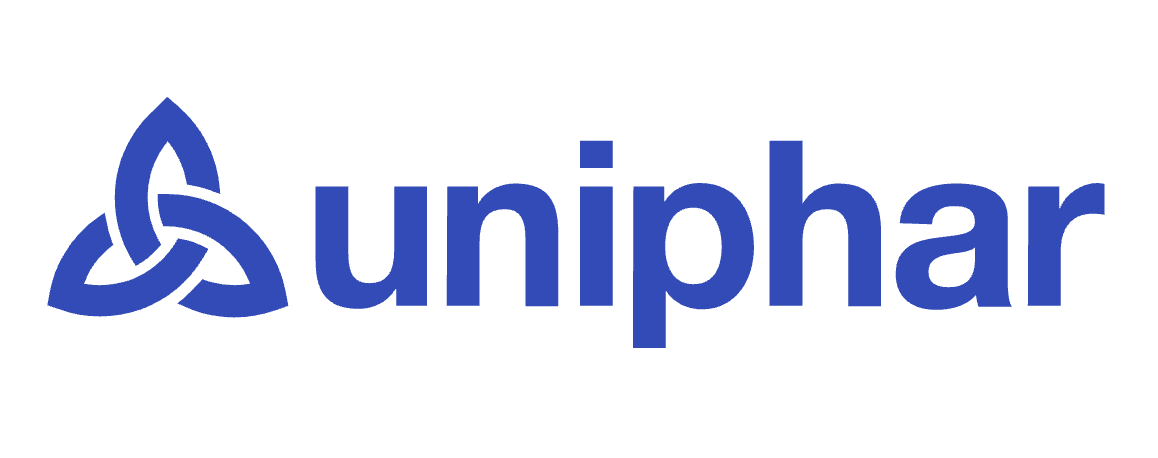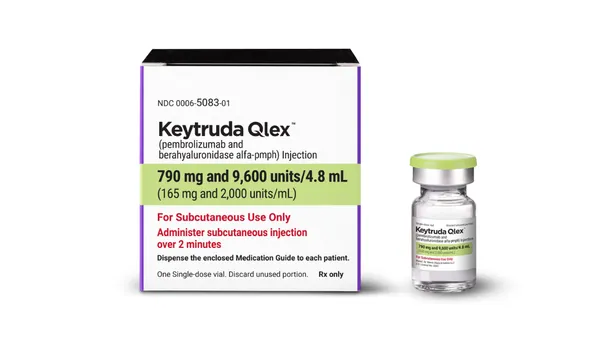Nano-Enabled Drug Discovery Market to Reach $1.3 Billion by 2009 Nano-enabled drug-discovery solutions will generate revenue of $1.3 billion in 2009 and increase to $2.5 billion in 2012, according to a new report from NanoMarkets LC. The report, The Impact of Nanotechnology in Drug Discovery: Global Developments, Market Analysis, and Future Prospects, projects that labs-on-a-chip and arrays will offer the largest opportunities. Nanoparticulate-based solutions also show significant promise. Research suggests that nanotechnology will provide tangible benefits to the drug-discovery process through: improved understanding of chemicals at the cellular/molecular level; improved identification and validation of target proteins and drugs; increased throughput; reduced time for the identification of new drugs; reduced amount of precious reagents required to carry out screening of potential drugs; and improved visualization of drug interactions. NanoMarkets expects the technology to have a broad and deep impact on numerous areas of the drug-discovery process. By 2009, 19% of nano-enabled drug-discovery revenue will come from the control and analysis of cells, the report predicts. Another 13% of revenue is expected to come from DNA/RNA sizing, electropheroresis, and quantitation. Genotyping will likely account for 11% of revenue, and high-throughput screening for 10%. The companies in the best position to benefit from the move toward nano-enabled solutions in drug discovery are the major microfluidics and lab-on-a-chip companies, the report claims. Additionally, there are opportunities for self-assembly firms in the future because they are offering new solutions, not just for drug discovery, but also for drug delivery and disease prevention. Risk/Reward Balance is Shifting in Late-Stage Licensing The world’s top 20 pharmaceutical companies are moving away from late-stage in-licensing, according to analysis conducted by Wood Mackenzie. Using its LicensingInsight analysis tool, the company examined more than 700 deals entered into since 1989 by companies representing 66% of the world’s pharmaceutical sales. In the last six months, this group has concluded 25 new product-specific licensing deals, in line with the average rate of deal-making over the last 15 years. But, a significant finding of this analysis was that 13 of these deals were in-licensing of projects in Phase I, II, or III clinical development. “Given the desperate state of the portfolios of most of the top 20 companies, we would have expected to see more of an increase in late-stage in-licensing activity,” says Dr. Keith Redpath, Wood Mackenzie’s head of life-sciences research. According to Dr. Redpath, there are two possible explanations for this activity: either there are no Phase II/III projects out there worth licensing, or companies are so confident of their late-stage pipelines that they would rather spend money augmenting their early-stage programs internally and by entering strategic alliances with biotechs. Emerging companies have more than 250 active, unlicensed, novel drug candidates in their late-stage pipelines, according to the report’s authors. But the costs to develop beyond Phase II could mean that many unpartnered Phase III drugs are just too risky. Alternatively, these products could be so desirable that the originator company is acquired. “When a company’s internal research and development cannot maintain its pipeline, in-licensing of development candidates is the only way to support growth,” says Dr. Siân Renfrey, principal consultant and co-author of the report. “In 2003, licensed products accounted for more than $70 billion in revenue for the top 20 pharmaceutical companies,” Dr. Renfrey says. “By 2008, we forecast that figure to exceed $100 billion.” Pharma-Funded Research Reflected Stronger Science and Better Presentation Research sponsored and written by pharmaceutical companies provides greater detail and clearer understanding of results than independent research. Thus concludes a study by Astrolabe Analytica Inc. to measure the perceived scientific quality of research published in professional medical journals. The study, which covered almost 7,000 articles published in more than 1,200 medical journals, found that pharma-funded research reflected stronger science and better presentation than research that was not funded by pharmaceutical companies. Astrolabe Analytica examined research published over the past 15 years in 16 different therapeutic areas, using its proprietary Astrolytix scoring system to determine the quality of the published research. “One of the reasons for the higher overall ratings for pharma-funded research is that the pharma industry is often at the forefront of designing, practicing, and reporting good science,” explains Lawrence Liberti, executive VP of Astrolabe Analytica. “The industry knows how to scientifically gather information and then clearly report findings.” Merger of Sankyo and Daiichi Could Mean More Japanese Mergers and Acquisitions Sankyo and Daiichi have announced their intention to merge their businesses into a single joint holding company this October. The announcement comes on the heels of the Japanese mega-merger of Yamanouchi and Fujisawa to form Astellas. And while the merger has come as no great surprise, recent analysis from Wood Mackenzie suggests that it could portend a flurry of merger and acquisition activity in the Japanese market. Under the terms of their agreement, Daiichi shareholders will receive 1.159 shares and Sankyo shareholders will receive 1 share in the joint holding company, valuing the deal at $7.5 billion. The companies’ pharmaceutical businesses are expected to be fully integrated by April 2007. The greatest therapeutic synergies between Sankyo and Daiichi lie in the cardiovascular area. Wood Mackenzie suggests that the combined entity would be a leader in the Japanese cardiovascular market, with representation in the key subsegments of hypertension, arrhythmia, hyperlipidaemia, and thrombosis. The company would also have a strong presence in the musculoskeletal/pain sector, the metabolism area, and the respiratory area. Wood Mackenzie also notes that these synergies underscore the potential likelihood for regulatory bodies to request product divestitures. In the thrombosis area, for instance, where Daiichi has two key platelet antiaggregants in its portfolio, Sankyo probably will be required to divest its developmental platelet anti-aggregant prasugrel. When taken together, Sankyo and Daiichi’s 2004 year-to-March (YTM) sales suggest that the combined companies will overtake the Japanese market, according to Wood Mackenzie. The single entity can boast estimated proforma sales of $4.5 billion and a Japanese market share of 7.2% for 2004, squeezing out Astellas, the Yamanouchi-Fujisawa merged entity, and Takeda, the current domestic leader. Furthermore, the Wood Mackenzie analysis discusses Sankyo and Daiichi’s combined drug R&D spending for YTM 2004, which is $1.1 billion. The combined entity creates critical mass, ranking only second to Astellas in terms of R&D expenditure. Takeda, which previously dominated R&D expenditure rankings, slips to third place when these figures are taken into account. According to Wood Mackenzie, Japan’s harsh operating conditions, including government-imposed pricing, have led domestic and Western companies to take drastic measures. Western companies have reacted through increasing their critical mass in this region, while domestic companies have shed noncore businesses and, more recently, entered into mergers and acquisitions. The announcement of the Daiichi-Sankyo merger soon after the formation of Astellas from Yamanouchi and Fujisawa is likely to cause fear among Japanese rivals, suggests Wood Mackenzie. Additional Japanese mega-mergers may be inevitable as the companies that rely on the domestic market struggle to retain market share. Best Practices Examines Ethnic Marketing Practices Internal efforts to increase sensitivity and raise awareness of diseases affecting ethnic populations are as important to pharmaceutical multicultural marketers as external efforts. This is the finding of a study completed by Best Practices LLC to understand the tactics and strategies of marketers targeting minority physicians. Researchers examined the practices of marketers at six leading pharmaceutical companies, including Pfizer Inc., Eli Lilly & Co., Wyeth, sanofi-aventis, and Roche. The study found that where there are dedicated people responsible for ethnic marketing, as much as half of their time is spent on strategic internal projects directed at raising awareness of and sensitivity to multicultural issues among brand teams and sales staff. Additionally, companies tend to identify a population with a therapeutic need and develop campaigns to target all population segments. A critical element of the total marketing strategy is to build relationships with physicians who either belong to a targeted ethnic group or have an appropriate patient base. Continuing medical-education programs are another key component of most marketing programs. Generally, these CME programs either teach skills for working with multicultural patients or focus on issues in ethnic healthcare. Additionally, the pharmaceutical companies provide physicians with language-specific and culture-specific educational and marketing resources to share with patients. record number of patients Receive Assistance from America’s Pharma Companies A record number of patients received free or discounted medications from America’s pharmaceutical companies last year, a new level of assistance due in large part to the industry’s expanded efforts to assist those who need help with their drug costs. In 2004, millions of patients across America received more than 22 million prescriptions with a wholesale value of more than $4.17 billion. In 2003, by comparison, 18 million prescriptions were filled with an estimated wholesale value of $3.4 billion. “We hope the number of people who are helped continues to increase,” says Billy Tauzin, president and CEO of the Pharmaceutical Research and Manufacturers of America (PhRMA). “PhRMA member companies know a medication that sits on a shelf, out of financial reach of patients, helps no one.” The record level of assistance was reached in part due to a series of innovative new state programs that serve as clearinghouses for the more than 275 public and private prescription-assistance programs available. In 2004, the industry also launched a “dynamic form” on its helpingpatients.org Website that made filling out the forms needed to apply easier and faster. “In 2004, building off of the success of Rx for Ohio, PhRMA launched programs in six states working with dozens of community and health organizations to help patients find and apply for help with their drug costs,” Mr. Tauzin says. “Regardless of where they live, help is available today for Americans who are having trouble affording their prescriptions. No one who needs help should go without their life-saving medications.” The state programs feature a Website, the dynamic form for ease of application, and a toll-free number for those who prefer to call for initial eligibility screening. “The success of these programs is rooted in the local support of community health groups, physicians, and many others,” Mr. Tauzin says. “Working together, these partnerships reach out to individuals, conduct training sessions on enrollment, and help spread the word that help exists for people who need it.” Blockbuster Business Model to Give Way to More Targeted Approach With Growth of Pharmacogenomics Pharmacogenomics will alter the balance of power in the way drugs are developed, tested, marketed, and prescribed during the next decade, and the blockbuster business model of big pharmaceutical companies will eventually give way to a more targeted approach, according to PricewaterhouseCoopers’report, Personalized Medicine: The Emerging Pharmacogenomics Revolution. As power shifts, life-sciences firms are expected to gain in negotiations with pharma companies and will assume a greater role in drug development, accelerating the pipeline of potentially more clinically effective drugs based upon individual genetic makeup. The established business model pursued by the $250 billion U.S. pharmaceutical industry carries both high risks and high costs, and the industry is under pressure from payers, providers, regulators, and consumers to contain costs and ensure safety. Blockbuster drugs, those with peak annual global sales of $1 billion and prescribed for general population use, can cost upward of $800 million to develop, according to some industry experts, and take between eight and 12 years to advance from the lab to the pharmacy. Yet these drugs are typically effective in only 40% to 60% of the patient population. New advances in genetic testing have led to use of biomarkers in an individual’s genetic code to pinpoint the underlying causes of disease and to predict whether a patient is likely to respond beneficially to a particular drug. The promise of pharmacogenomics in healthcare delivery is that it can aid physicians and patient decisions regarding therapies for serious diseases and also help to diagnose diseases earlier in their development. “Pharmacogenomics would enable drug marketers and physicians to target therapies to smaller patient populations, those for whom they know the drug would actually work,” says Tracy T. Lefteroff, global managing partner, life-sciences industry services for PricewaterhouseCoopers “It is arguably the most significant advance in biomedical research in the past 25 years and will have enormous implications in healthcare delivery during the next 10 years.” As with previous technology revolutions, science is leading the way to a new model of doing business. The blockbuster approach simply doesn’t work long-term given intensifying pressure on pharmaceutical companies to reduce costs and at the same time accelerate development of new therapies to treat ever-more complex diseases, Mr. Lefteroff says. According to the report, the blockbuster model’s demise is not imminent. Pharmacogenomics, for all of its promise, is not an immediate substitute for the existing blockbuster model. Not all areas are well suited to pharmacogenomics products, and products that are safe and inexpensive will continue to fare well. Number of Product Licensing Deals Entered Into by the Top 20 Pharmaceutical Companies (1989-2004) Stage of Development Period 1989-2003 1Q 2004 2Q 2004 Lead compound identification 116 1 5 Preclinical 186 7 7 Phase I 89 3 3 Phase II 133 2 5 Phase III 110 6 5 Preregistraton 34 3 0 Registration 6 0 0 Source: Wood Mackenzie, Boston. For information, visit woodmac.com. Multicultural marketing programs are increasingly important to pharmaceutical companies, says MarthaHaswell, Senior Research Associate at Best Practices and Lead Researcher on the multiculturalmarketing study. Follow up Astrolabe Analytica Inc., Fairless Hills, Pa., is a marketing analytics and scientific communications company. For more information, visit astrolabeanalytica.com. Best Practices LLC, Chapel Hill, N.C., is a research and consulting firm focused on studying the best business practices, operating tactics, and winning strategies of world-class organizations. For more information, visit best-in-class.com. NanoMarkets LC, Sterling, Va., provides market research reports, customized industry analyses, and general market commentary for companies looking to capitalize on nanotechnology-based opportunities. For more information, visit nanomarkets.net. The Pharmaceutical Research and Manufacturers of America (PhRMA), Washington, D.C., represents the country’s leading pharmaceutical research and biotechnology companies, which are devoted to inventing medicines that allow patients to live longer, healthier, and more productive lives. For more information, visit phrma.org pricewaterhousecoopers, New York, provides research and analysis of technology trends and their effects on companies, industries, and markets. For more information, visit pwc.com. Wood Mackenzie, Boston, provides global life-sciences information, advisory services, and knowledge-based consulting. For more information, visit woodmac.com.
An article from











